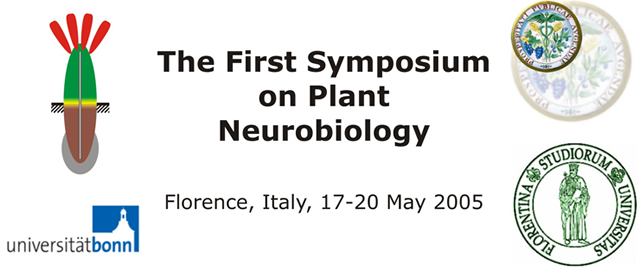
 |
| Glutamate receptors and GABA in plant responses to environmental stress |
| Frank Turano*, Jiman Kang and Sivasubramani Balasubramanian |
| The George Washington University, Department of Biological Sciences, Washington, DC, USA |
| *email: fturano@gwu.edu |
|
The non-protein amino acid
γ-aminobutyric acid (GABA) has been shown to rapidly increase in plants upon exposure to a variety of
environmental stresses. However, little is known about the physiological role of GABA in higher plants or how
alterations in the balance between Glu and GABA affect normal plant growth and development. Both molecules
have been proposed to be signaling molecules in plants, we have taken two approaches to address this
possibility. One approach focuses on the biosynthetic relationship between the putative ligands, Glu and GABA,
while the other approach focuses on the putative receptors in the signaling pathway(s). GABA is synthesized from glutamic acid by the enzyme glutamic acid decarboxylase (GAD). The completion of the Arabidopsis genome has revealed that there are five AtGAD genes. AtGAD1 and AtGAD2 are expressed in roots and throughout the plant, respectively. However, the expression of the other three genes (AtGAD3-5) has not been reported. In order to gain a better understanding of the temporal and spatial expression of all the members of the AtGAD gene family, we made promoter and uidA gene fusion (AtGAD::GUS) constructs and determined the expression of each gene throughout development and upon exposure to distinct stresses. Our findings suggest that the AtGADs have non-redundant roles. Results from parsimony and incongruence length difference analyses demonstrate that regions of the N-termini of nearly a third of the twenty members of the putative glutamate receptors in Arabidospis thaliana (AtGLRs) are related to animal GABA B receptors. Immunoblot analyses and immunolocalization of one of these AtGLR gene products, AtGLR3.2, show that it is an integral membrane protein that accumulates in rapidly dividing cells and vascular tissue. These findings suggest that AtGLR3.2 may be associated with calcium distribution and allocation. We used an antisense approach to develop Arabidopsis lines deficient in AtGLR1.1 (antiAtGLR1.1). Our results suggest that AtGLR1.1 has functional characteristics similar to animal ionotropic glutamate receptors (iGLRs). Using a combination of targeted- proteomics and - metabolomics, genome-wide microarray and physiological analyses, we show that there is a strong interaction between carbon (C), nitrogen (N), sulfur (S) and abscisic acid (ABA) metabolic pathways, ABA sensing, and/or H2O utilization. In conclusion, our results show that the AtGLRs (i) regulate distinct pathways associated with N and S acquisition, distribution and metabolism, (ii) alter the expression of distinct carbon (C) metabolic pathways, (iii) alter the synthesis of the phytohormone ABA and sensitivity of the plant to ABA, and (iv) ultimately coordinate components of the C/N/S and ABA signaling pathways which change stomatal aperture to affect plant responses to H2O-related stresses. These findings suggest that the AtGLRs may coordinate the control of distinct components of C, N and S metabolism as well as ABA biosynthesis and sensing. |
| [Back] |
Last Update on 06-06-05 by Andrej |
|